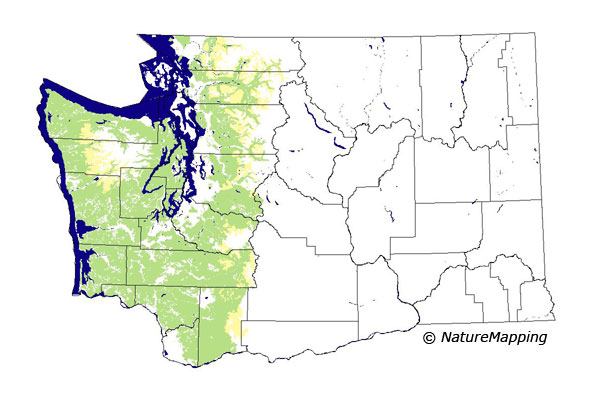GAP Analysis Predicted Distribution Map
Western Redback Salamander (Plethodon vehiculum)
Species Code: PLVE
|
Legend:
 = Core Habitat = Core Habitat
 = Marginal Habitat = Marginal Habitat
Metadata
(Data about data or how the map was made)
Predicted Distribution
Amphibians do not migrate as some birds and mammals, so the colored areas depict the predicted range for the Western Redback Salamander year-round. The habitats were identified using 1991 satellite imagery, other datasets and experts throughout the state, as part of the Washington Gap Analysis Project.
Click to enlarge distribution map
|
Distribution and Habitat Requirements
The Western Redback Salamander occurs mainly in dense forests from sea level up 1,200 meters. Also known to occur on five islands within the Puget Sound.
This species has recently been found on Destruction and Ozette Islands off the Washington coast.
Models
All ecoregions west of the Cascades, plus some adjacent areas into the East Central Cascades were selected.
All zones west of the Cascades crest below and including the Western Hemlock zone were core. The Silver Fir zone was marginal
in all except in the Southwest Cascades. The Mountain Hemlock zone was marginal in the Southwest Cascades. The Grand Fir zone was marginal
in the Southeast Cascades.
Conifer-lined riparian areas (areas along rivers and streams) were good habitats.
All open- and closed-canopy hardwood/conifer and conifer forest were suitable where appropriate microhabitats existed,
except in the Woodland Prairie Mosaic zone, where open forests were excluded.
Translated from the Washington Gap Analysis Amphibians and Reptiles Volume by Karen Dvornich
Webpage designed by Dave Lester

 = Core Habitat
= Core Habitat = Marginal Habitat
= Marginal Habitat